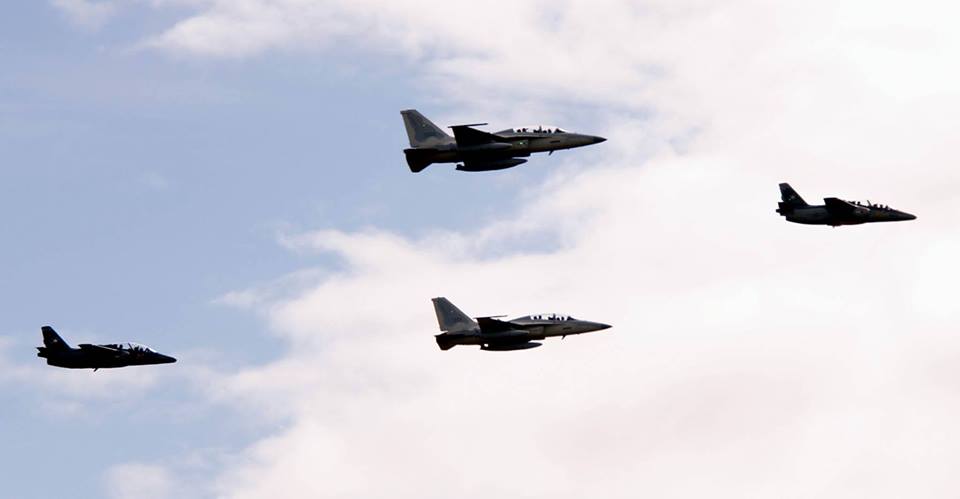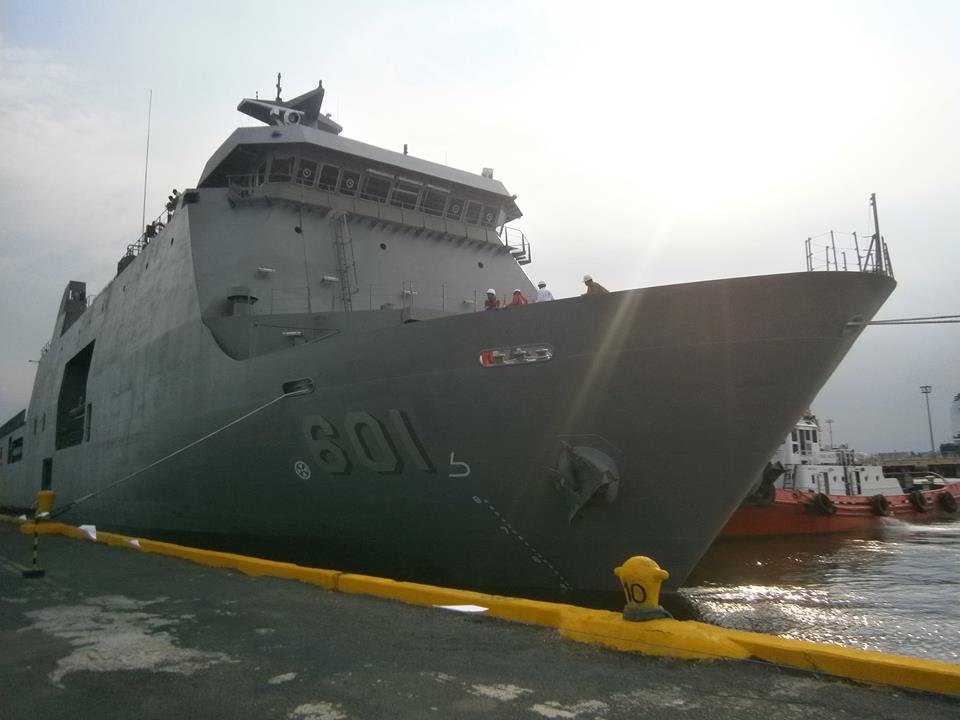The modernization of the Armed Forces of the Philippines (AFP) is gaining momentum as contracts for new aircraft, weapons and platforms were signed while other items were delivered this year.
The plane being referred to is the A-29 "Super Tucano" light attack aircraft made by Brazilian aircraft manufacturer Embraer Defense and Security.
Department of National Defense (DND) public affairs office chief Arsenio Andolong said the Philippines would acquire six Super Tucanos worth PHP4,968,000,000.
Funds would be sourced from the Armed Forces of the Philippines Modernization Act Trust Fund. Notice to proceed for the project was issued first week of December, he added.
"The aircraft that was selected after a rigorous public bidding process that was participated in by several manufacturers from different countries was the Super Tucano A-29, which is compliant with the stringent technical specifications required by the PAF (Philippine Air Force)," Andolong said.
The DND public affairs office chief added the A-29 is a durable, versatile, and highly advanced aircraft capable of carrying out a wide range of missions. "(It can) even (operate) on unimproved runways," he added.
Deliveries of the A-29s are expected to commence on 2019.
The Super Tucanos are expected to augment or even replace the eight to 10 ageing Rockwell OV-10 "Bronco" attack planes being used by the PAF in close-air support missions.
The DND public affairs office chief said the Super Tucanos would be turned over and operated by the PAF's 15th Strike Wing based in Sangley Point, Cavite City.
"Once the delivery of these aircraft (are) completed in 2019, they will be turned over and maintained by the 15th Strike Wing, the PAF's end-user," he added.
The 15th Strike Wing is the operator of all the Air Force's ground attack aircraft including the venerable Rockwell OV-10 Broncos and assorted armed helicopters.

FA-50PH fighter jets in flight over the skies of Clark Air Base in Pampanga
Aside from the Super Tucanos, another welcome development for the PAF is the contract signing for the AIM-9 "Sidewinder" air-to-air missiles which will be used to arm the country's 12 South Korean-made FA-50PH "Fighting Eagle" jet which is currently being used as a fighter and attack aircraft.
Incidentally, the Mach 1.5 capable FA-50s were used in combat during the five-month battle to retake Marawi City from the clutches of the Maute Group terrorists.
The South Korean-made aircraft was utilized as a ground-attack aircraft in said campaign which started May 23 and ended on October 23 this year.
"Notice to Proceed was issued to Diehl Raytheon of Germany last August 31. The ('Sidewinder' contract) is worth PHP1,016,734,088." he added.
Andolong declined to give the specific number and delivery dates of the missiles for security reasons. But he said the "weapons are sufficient for all of the country's FA-50s."
The first two FA-50s were delivered on Nov. 28, 2015 with the last two being handed over by Korea Aerospace Industries this May. Contract for the 12 South Korean-made jets are worth PHP18. 9 billion.
The DND public affairs office chief said the AIM-9s to be acquired are "all live rounds and fresh from the factory" meaning all of its sensors, rocket motors and warheads are brand-new.
With the pending delivery of the missiles, the FA-50s will now have another weapon for air-to-air combat aside from its internal 20mm cannon, making it more capable of protecting the country's airspace against airborne threats.
The AIM-9, which was developed by the US Navy in the 1950s, is one of the world's most reliable and successful air-to-air missiles.
It utilizes infrared homing for guidance and tracking and has a top speed of Mach 3 or three times the speed of sound.
Its warhead weighs around 20 pounds and the missile has a length of 9 feet and 11 inches.
Other deliverables
In the deliverables side, the Philippine Navy (PN) on May 8 took delivery of its second strategic sealift vessel (SSV), the BRP Davao Del Sur (LD-602), the sister ship of the BRP Tarlac (LD-601), which was delivered and commissioned in 2016.
The former was constructed by Indonesian shipyard PT PAL (Persero) and commissioned into service last May 31. She was named the Davao Del Sur in honor of Mount Apo, the country's highest peak.

BRP Tarlac, sister ship of BRP Davao del Sur, is docked at the Manila South Harbor
"It gives due recognition to the province as sanctuary of natural wonders and rarities like the country’s highest peak Mount. Apo, the most prized Philippine orchid Vanda Sanderiana, and the endangered Philippine Eagle," PN spokesperson Capt. Lued Lincuna earlier said.
Also, the namesake takes inspiration from a former PN vessel of the same name notable for its accomplishments during the 1980s.
"Naming the vessel after Davao Del Sur is consistent with its predecessor, BRP Tarlac (LD-601), which was also named after a province," Lincuna added.
The ship was launched last September 29. She and her sister, the BRP Tarlac, are currently the largest Filipino warships in commissioned. Both ships had an overall length of 120 meters, breadth of 21 meters, draft of five meters and can carry a payload of 2,800 tons.
The vessels have a cruising speed of 13 knots and maximum speed of 16 knots and a minimum operating range of 7,500 nautical miles. Both SSVs have a contract price of PHP4,000,000,000.
The SSVs can carry 500 troops each, besides two rigid-hull inflatable boats, two landing craft units and three helicopters apiece. The pair was extensively used to transport troops and their equipment during the Marawi City campaign.
Aside from the SSV, the Navy also took delivery of three additional multi-purpose attack craft (MPAC) last May 22.
This raises the number of MPACs in PN inventory to nine. However, these naval craft are not your average MPACs as these vessels have provisions for the Rafael Advanced Defense Systems Ltd's Spike ER (extended range) missile systems, making them the first Filipino warships to be armed with these weapons.
Contract for the three ships is worth PHP270 million. The weapons are on anti-ship mode meaning it can engage surface vessel targets. It is capable of penetrating 1,000 mm (39 inches) of rolled homogeneous armor and has a maximum range of five miles.
Former PN flag-officer-in-command Vice Admiral Ronald Joseph Mercado earlier said that the missiles and their launchers would arrive before Christmas. However, despite repeated queries, both Andolong and the Navy chief, had yet to confirm the arrival of the weapons.
All of the above-mentioned defense equipment and items were acquired during the AFP Modernization Program Horizon One which started 2013 and will end this year (2017).
Other equipment acquired during Horizon One are the two Hamilton-class cutters (renamed the Del Pilar-class frigates, six MPACs, 114 armored personnel carriers, three brand-new C-295 medium lift aircraft, two C-130 heavy transports, five utility versions of the Agusta Westland AW-109 helicopters, eight of its attack versions, five landing craft heavies, to name a few.
Horizon Two will start on 2018 and end on 2022 while Horizon Three will commence on 2023 to 2028.
The last two phases involved beefing up of the AFP's external defense capabilities and includes the acquisition of multi-role fighters, missile batteries, and diesel electric submarines and more modern detection and surveillance systems.
http://www.pna.gov.ph/articles/1019293

No comments:
Post a Comment
Note: Only a member of this blog may post a comment.